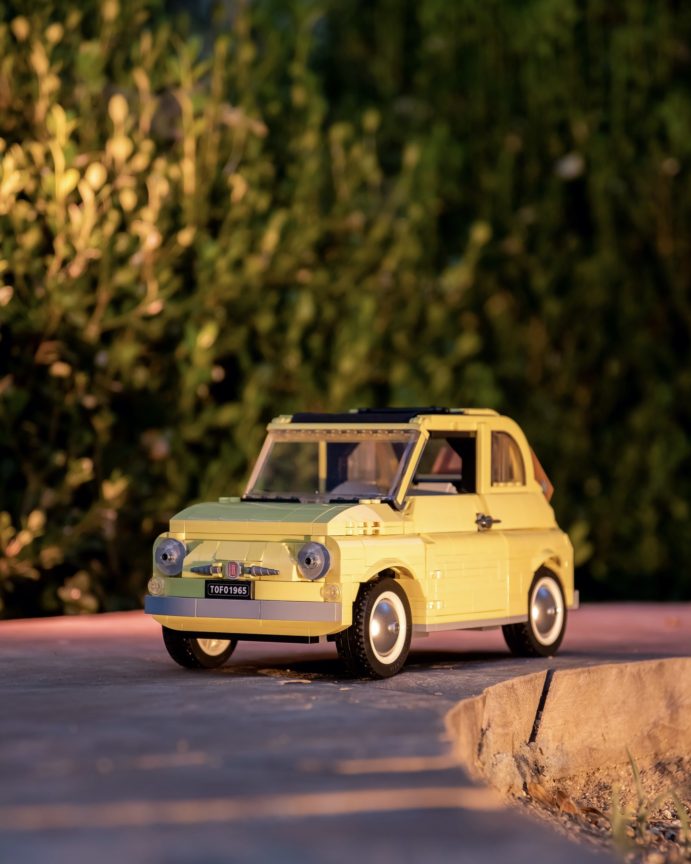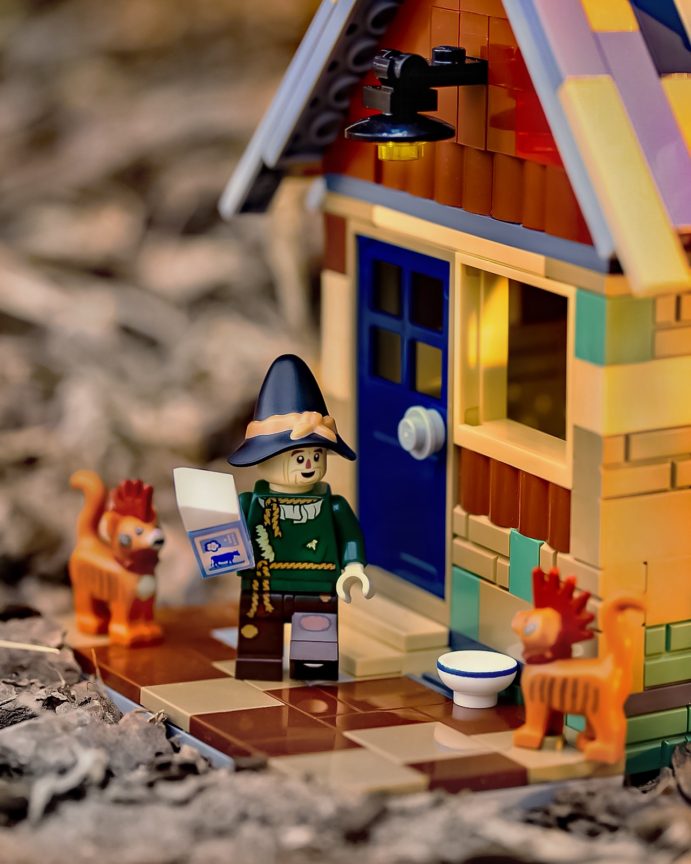This month we’re going to be talking about different focal lengths and how each can have a very different outcome on your final image.
First we’ll start with wide angle, ultra wide angle and fisheye lenses.
A wide angle lens on a full frame camera is from 35 to 24mm. Ultra wide angle is 24 to 14mm and in fact the focal length on most smartphones is usually around 24mm. A fisheye lens is anywhere from 14mm and below.
The first pic was taken at 16mm and the second at 35mm equivalent on a full frame camera.

So chances are you already have a wide angle lens… on your smart phone! This is a great place to start since the wide focal length is versatile enough to use for most any situation, especially toy photography. I’ve actually been more into shooting wide lately so for me, wider is better.
In wide angle and UWA (ultra wide angle) lenses there is a certain amount of barrel or pin cushion distortion. This gives a wide angle photo a feeling of depth, more noticeable on fisheye lenses where the only part of the image with straight lines is in the direct center of the frame. The edges have a stretched and enlarged effect due to the spherical shape of the glass elements in the lens required for a wide field of view.
Wide angle and fisheye lenses are best used for incorporating as much into a scene as possible. Camera shake is really not an issue when using wide focal lengths and usually easier to keep everything in focus.
The only issue I find when shooting really wide with a macro lens is how close you have to get to the subject. For some of my photos, my lens is literally sitting inside the build!

Zoom and prime lenses

The main three lenses I use are my Canon 60mm macro, Sigma 17-70mm macro and a Canon 10-18mm.
For my LEGO photography I really don’t need anything longer than a 60mm macro, which is also a prime lens.
A prime is a lens that only has one focal length — it doesn’t zoom. These lenses tend to be sharper and have very low to no chromatic aberration since they require fewer glass elements inside the lens.
A downside of zoom lenses is how much glass it takes to achieve several different focal lengths in one lens. Also affected is the widest aperture setting since most zooms tend to move towards a higher aperture when zoomed in to the telephoto end.

A 50mm lens on a full frame camera has the same field of view as your eyes, this is also called a “normal lens.” They usually have low apertures so they’re ideal for using at night or indoors in low light situations. There’s also the wonderful bokeh and shallow depth of field that comes along with a fast 50mm.
The first pic of the LEGO Fiat 500 was shot at 70mm with an aperture of f4. The second with a 50mm prime lens at f1.8. Notice how much more shallow depth of field a fast 50 is able to create even though it’s at a shorter focal length than the shots at 70mm.

Medium telephoto lenses generally range from about 70-135mm. Macro lenses also tend to fall within this subcategory but there are exceptions. Here’s a shot with a 60mm macro lens, not too narrow a field of view but the macro capabilities allow for me to get in close. Really great for highlighting just a few key details.

This range of focal length is great for portrait photography too because there is very little distortion. Lens compression starts coming into play at this focal range, which means elements in the background begin to appear larger than they actually are.
Telephoto and Supertelephoto
A super telephoto lens is anything longer than 200mm. These lenses are great for subject isolation and have excellent compression to make for some soft and smooth background blur. If you plan on photographing any wildlife a long focal length is ideal to stay far enough away but still be able to get close up shots of your subject.
Wide vs telephoto

When deciding on which lens to use it really just depends on the scene and subject you are photographing. A long lens is great for really focusing on a single object or a few select details. A drawback to shooting really long with telephoto lenses is dealing with some blurry missed shots because of camera shake.
With such a tight field of view, it’s much harder to keep your camera still and maintain composition. This can usually be solved by shooting with a faster shutter speed or with a tripod.
Some telephoto lenses have built-in image stabilization to help mitigate camera shake. I’ve found that shooting minifigs at pretty much anything over 130mm becomes to be quite difficult to keep focus on such a small subject.
Hope you’ve enjoyed this month’s look at wide angle and telephoto focal lengths! I had a great time using a couple lenses I don’t really take out of the bag too often.


Please I’d like to hear some great news.